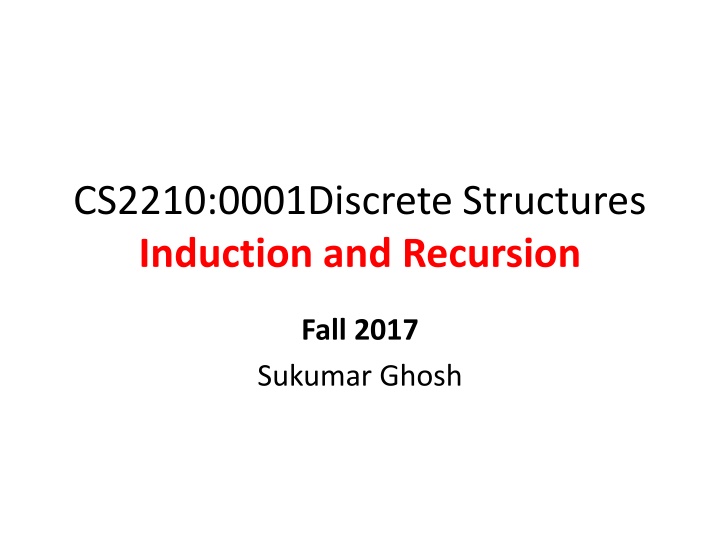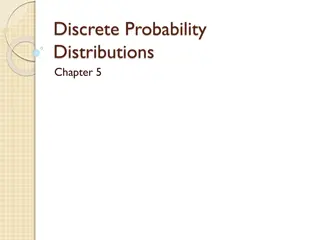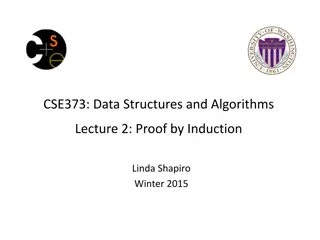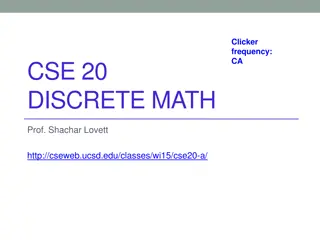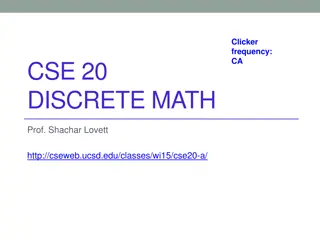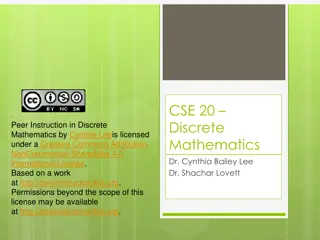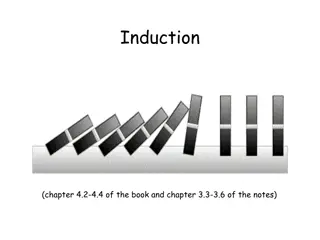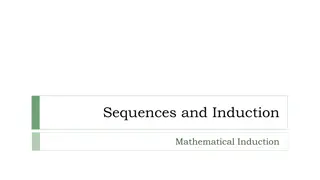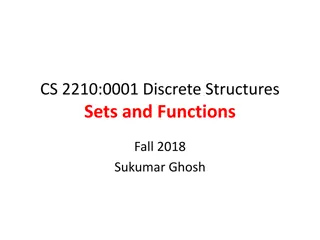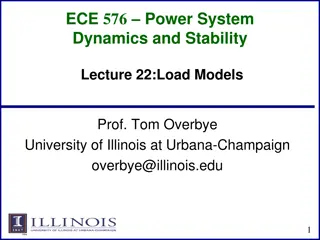Mathematical Induction in Discrete Structures
Mathematical induction is a powerful method used to prove statements in discrete mathematics. Explore examples and exercises demonstrating the application of mathematical induction in this comprehensive guide.
Download Presentation

Please find below an Image/Link to download the presentation.
The content on the website is provided AS IS for your information and personal use only. It may not be sold, licensed, or shared on other websites without obtaining consent from the author.If you encounter any issues during the download, it is possible that the publisher has removed the file from their server.
You are allowed to download the files provided on this website for personal or commercial use, subject to the condition that they are used lawfully. All files are the property of their respective owners.
The content on the website is provided AS IS for your information and personal use only. It may not be sold, licensed, or shared on other websites without obtaining consent from the author.
E N D
Presentation Transcript
CS2210:0001Discrete Structures Induction and Recursion Fall 2017 Sukumar Ghosh
What is mathematical induction? It is a method of proving that something holds. Suppose we have an infinite ladder, and we want to know if we can reach every step on this ladder. We know the following two things: 1. We can reach the base of the ladder 2. If we can reach a particular step, then we can reach the next step Can we conclude that we can reach every step of the ladder? YES!
Understanding induction Suppose we want to prove that P(x) holds for all x
Exercise Prove by induction the following: 1. 2.
A Tiling Problem Prove by induction that you can tile any (2n x 2n) checkerboard (n>1) with one square removed using only the triominoes of Fig 1 removed Figure 1
Proof hint removed Base cases Divide the (2k+1 x 2k+1) checkerboard Into four (2k x 2k) checkerboards Induction hypothesis Assume that the claim holds For boards of size (2k x 2k) Inductive step
Strong induction To prove that is true for all integer We compete two steps: Basis. We verify that the proposition P(1) is true. Inductive Step. We show that the conditional statement Is true for all positive integers k. Inductive hypothesis Inductive hypothesis
Example 1 Theorem. Show that any integer n > 1 can be expressed as the product of one or more primes. (Let us call it P(n)) Basis. P(2) is true. Induction hypothesis. Assume holds Inductive step. We have to show that P (k+1) holds. If P(k+1) is prime, then the theorem holds. Else and a, b < k+1, and due to the induction hypothesis, the theorem holds.
Errors in Induction Question: What is wrong here?
Errors in Induction Here is a proof that a camel can always carry n straws on its back, even if n is arbitrarily large Let P(k) represent the camel can carry k straws. Base case: P(1) is true. Induction hypothesis: Assume P(k) is true for some k < n Inductive step: Since the camel can carry k straws, it can carry one more straw, i.e. (k+1) straws, without any problem. Question: What is wrong here?
Recursive definition Recursion means defining or formulating something (such as a function or an algorithm), in terms of itself For example, let f(x) = x! We can define f(x) as f(x) = x * f(x-1)
Recursive definition Two parts of a recursive definition: Base case and a Recursive step .
Bad recursive definitions Why are these definitions bad?
More examples of recursive definitions: defining strings
More examples of recursive definitions: Matched strings of parentheses Data Type Brackets specifies the set of all matched sequences of brackets. For example consider [ [ [ ] ] [ ] ] It is matched. 0 +1 +2 +3 +2 +1 +2 +1 0 (The count should never be negative, and must end up with a zero). Base case. Brackets Recursive step. If then
Recursive definition of a full binary tree Basis. A single vertex is a full binary tree Recursive step. If T1 and T2 are disjoint full binary trees, then a full binary tree T1.T2 consisting of a root r and edges connecting r to each of the roots of T1 and T2 is a full binary tree.
Recursive definition of the height of a full binary tree Basis. The height of a full binary tree T consisting of only one node is Recursive step. If T1 and T2 are two full binary trees, then the full binary tree T= T1.T2 has height
Structural induction A technique for proving a property of a recursively defined object. It is very much like an inductive proof, except that in the inductive step we try to show that if the statement holds for each of the element used to construct the new element, then the result holds for the new element too. Example. Prove that if T is a full binary tree, and h(T) is the height of the tree then the number of nodes in the tree n(T) 2 h(T)+1 -1.
Structural induction continued Prove that if T is a full binary tree, and h(T) is the height of the tree then the number of nodes in the tree n(T) 2 h(T)+1 -1. root See the textbook (pages 355-356)
Recursive Algorithm Example 1. Given a and n, compute an procedure power (a : real number, n: non-negative integer) if n = 0 then power (a, n) := 1 else power (a, n) := a. power (a, n-1) Revisit Fibonacci, factorial etc.
Recursive Algorithm Example 2. Compute GCD (a,b) a b) procedure gcd(a, b) if a = 0 then return b else return gcd(b mod a, a)
Recursive algorithms: Sorting Here is the recursive algorithm Merge sort. It merges two sorted Iists to produce a new sorted list 8 2 4 6 10 1 5 3 8 2 4 6 10 1 5 3 5 3 4 6 10 1 8 2
Mergesort The merge algorithm merges two sorted lists 2 4 6 8 merged with 1 3 5 10 will produce 1 2 3 4 5 6 8 10 procedure mergesort (L = a1, a2, a3, an) ifn > 0 then m:= n/2 L1 := a1, a2, a3, am L2 := am+1, am+2, am+3, an L := merge (mergesort(L1), mergesort(L2))
Example of Mergesort 1 2 3 4 5 6 8 10 8 2 4 6 10 1 5 3 8 2 4 6 10 1 5 3 2 4 6 8 1 3 5 10 5 3 4 6 10 1 3 5 2 8 8 2 4 6 1 10 Completes sorting in O(n log n) steps
The Merge Algorithm procedure merge(L1,L2 : sorted lists) L := empty list whileL1 empty and L2 empty remove smaller of first elements of L1 and L2 from its list; put it at the left end of L if this removal makes one list empty then remove all elements from the other list; append them to L return L {L is the merged list with elements in increasing order}
Iteration vs. Recursion Recursive Fibonacci Iterative Fibonacci procedure f (n 0) if n = 0 then return 0 else if n = 1 then return 1 else return f(n 1) + f(n 2) {output is f(n)} procedure f (n 0) if n = 0 then return 0 else x := 0, y := 1 for i := 1 to n 1 z := x + y; x := y; y := z return y {output is f(n)} What difference do you see?
Pros and Cons of Recursion While recursive definitions are easy to understand Iterative solutions for Fibonacci sequence are much faster (see page 366)
